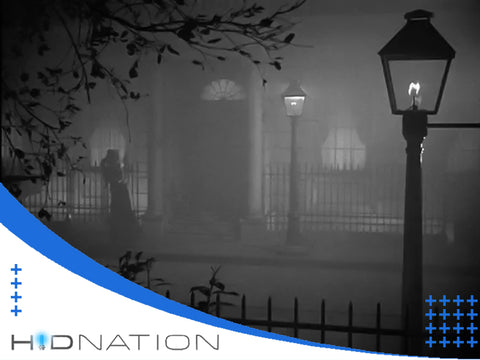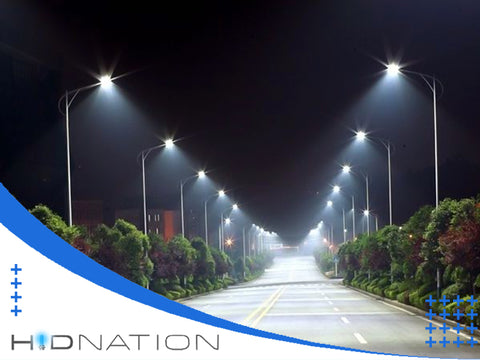Street lighting is an integral part of a city's infrastructure. It provides illumination but is also an essential element of smart city technology. It is a conduit for traffic management, public safety, Wi-Fi service, solar energy harvesting, electric vehicle charging, and efficiency controls.
Many local authorities have been pressured by financial and carbon reduction incentives to reduce nighttime lighting. This has triggered a debate about the impact on health outcomes.
The Early Years
Street lighting has a long history. It has been an issue since humans first started living together. Lack of light during the night can make it hard to see where you are going and increase your chance of being mugged or attacked.
Fortunately, modern technology has made it possible to overcome these problems. For example, intelligent lights that sense pedestrians and vehicles after dark and then turn on automatically.

One of the most significant changes to 414 light street occurred in the early 20th century when Thomas Edison developed a carbon filament incandescent lamp that produced enough light to be used for public lighting. This innovation revolutionized the industry and led to the development of the world’s first electric street lamps.
However, this type of lighting was insufficient for the needs of a city’s streets.
It also reduced the risk of fires caused by incandescent lamps because it burned away all of the mercury inside the 9005 led headlight bulb.
Despite these improvements, gas streetlights were still challenging to maintain and susceptible to vandalism. This is why it was only natural for cities to start regulating the use of gas-powered streetlights.
The Middle Ages
The Middle Ages, also known as Medieval Europe, is the period from the collapse of the Roman Empire to the 15th century. It is a time of significant social and political changes in Europe.
The Western Roman Empire, which had been large and powerful, collapsed in 476. This led to changes in European society, including the break from classical antiquity and the emergence of new kingdoms.

During this time, Europeans started to experience many different things, including population growth, technological advances, and the Crusades. There were also a lot of changes in religion as well, especially in the Church.
One of the most notable aspects of this time was the development of street lighting.
Another popular method was to use mercury vapor (MV) lights. These lights shone brighter than incandescent ones, but they were less efficient.
The Renaissance
The Renaissance was an era of cultural rebirth in Europe that harkened back to antiquity and sought to establish art as central to society. Furniture from the time reflected this movement, featuring ornately carved woods and tapestry-woven cushions.
It was a period of cultural rebirth and technological advancement that influenced everything from architecture to painting. In particular, it is a time of innovation in street lighting.

During this era, the arts became important in Europe because they communicated and united people.
The Renaissance was a time of innovation in painting and sculpture. It was a time when artists were able to combine breathtaking techniques with deeply religious aspects of art.
The 19th Century
After the 18th century saw major upheavals in human and civil rights, democracy and nationalism, industrialization, and the development of free market systems, European societies started to re-form. The 19th century was a time of significant change, opportunity, war, and conflict.
Street lighting became an integral part of the urban environment, and it was a crucial element for safety.
In the 19th century, 414 light street evolved from a mere light source to a functional and safe solution for pedestrians and motorists. Eventually, street lights were equipped with electricity. It could be automated to turn on when natural light reaches certain levels.
Gas lighting was the next major step in street lighting. Developed in England in the 1790s, gas lighting quickly spread nationwide. And by the time of Thomas Edison’s 1879 lamp invention, it was well-established and profitable.
Early gas lamps only illuminated a small area around their post. However, with transport infrastructure development, street lights gradually grew in size and incorporated features such as traffic signals and automatic switches to make them more efficient.
In the 20th century, street lighting evolved again to become more efficient and safer.
The 20th Century
Street lighting is an important part of a city's infrastructure. Without it, it would be hard for people to find their way around the city at night and be more likely to get mugged or attacked.
Streetlights have changed a lot throughout the years. They have gone from hand-carried lanterns to fixed-position fixtures illuminating streets and roadways.
These changes have led to a better quality of life and safer streets. They also save money on energy costs.
One of the most significant changes was using gas instead of oil for public street lighting.
This new lighting method was more efficient than the lanterns and provided more light for a shorter period.
These arc lamps effectively lit a wide area but were not long-lasting and emitted a harsh light.
The 20th century was a time of radical change in many areas of human activity. It was a century that saw scientific discoveries, increased communications, and accelerated transportation. It also saw major political changes and conflicts between nations.
The 21st Century
The 21st century has seen a lot of changes in street lighting, from the invention of electric lights to the use of light-emitting diodes (LED). LEDs are now becoming the most common type of street light due to their efficiency and lifespan.
With the advancement of technology, it is now possible to connect streetlights to various devices and networks, such as Wi-Fi or cellular service. This makes them more efficient and convenient.
Read Also: What Characterizes H9 Headlight Bulbs as a Reliable and Durable Option?
Currently, street lights are a critical component of our cities and can play an essential role in safety and traffic. In addition, they can also make cities more attractive and livable for residents and tourists.
Conclusion
In addition, the advancement of new energy-efficient technologies has also helped to reduce costs, power consumption, and environmental pollution. Some of these innovations include the ability to dim or switch off lights during off-peak hours and the use of high-efficiency LED lamps. By switching to these eco-friendlier options, cities can reduce their carbon footprint and improve the quality of life for all citizens.
FAQs
When Did Street Lighting Begin?
The first streetlights were fueled by natural gas. Using bamboo pipes, Chinese people harnessed natural gas from volcano leaks to ignite lamps in the streets and pathways.
The early light was mainly for security, deterring theft, and improving visibility. Wealthy citizens paid lantern slaves to keep the lamps fueled and bright throughout the night.
What Were the First Street Lights?
The earliest street lighting in the world was oil lamps used by wealthy citizens of ancient Rome. They were a significant deterrent to robbers and provided a light that was long-lasting and moderately bright.
What is the Theory of Street Light?
Traditionally street lighting is used to create safety, keep people safe from shady characters, and illuminate roads.
With the looming energy crisis, streetlights must be adaptive, efficient, and sustainable. Recent developments in LEDs offer a great solution to these problems. However, a proper revision of street lighting is needed.
Who Invented the Street Light System?
Traffic lights have always been around, but it was a Cleveland man named Garrett Morgan who patented the first electric automatic traffic signal.
He wanted to create a device to let drivers know when the "Stop" or “Go” signal had changed. His solution was a T-shaped pole unit equipped with three lights to give drivers a warning before they stopped.
What Are the Uses of Street Lights?
Street lighting improves safety, encourages a sense of order and cleanliness, promotes economic development, and increases the quality of life.
LED Street Lights are energy efficient and last longer than traditional street lamps.



